Abstract
Purified C3a, a cleavage product of the third component of complement,was incubated with various cell types of human and mouse origin. All the tumour cell types tested were lysed by low concentrations of C3a, whereas normal human lymphocytes were relatively resistant. No lysis was produced by C3 or C3b. The possible role of C3a in immunity against tumours is discussed.
Full text
PDF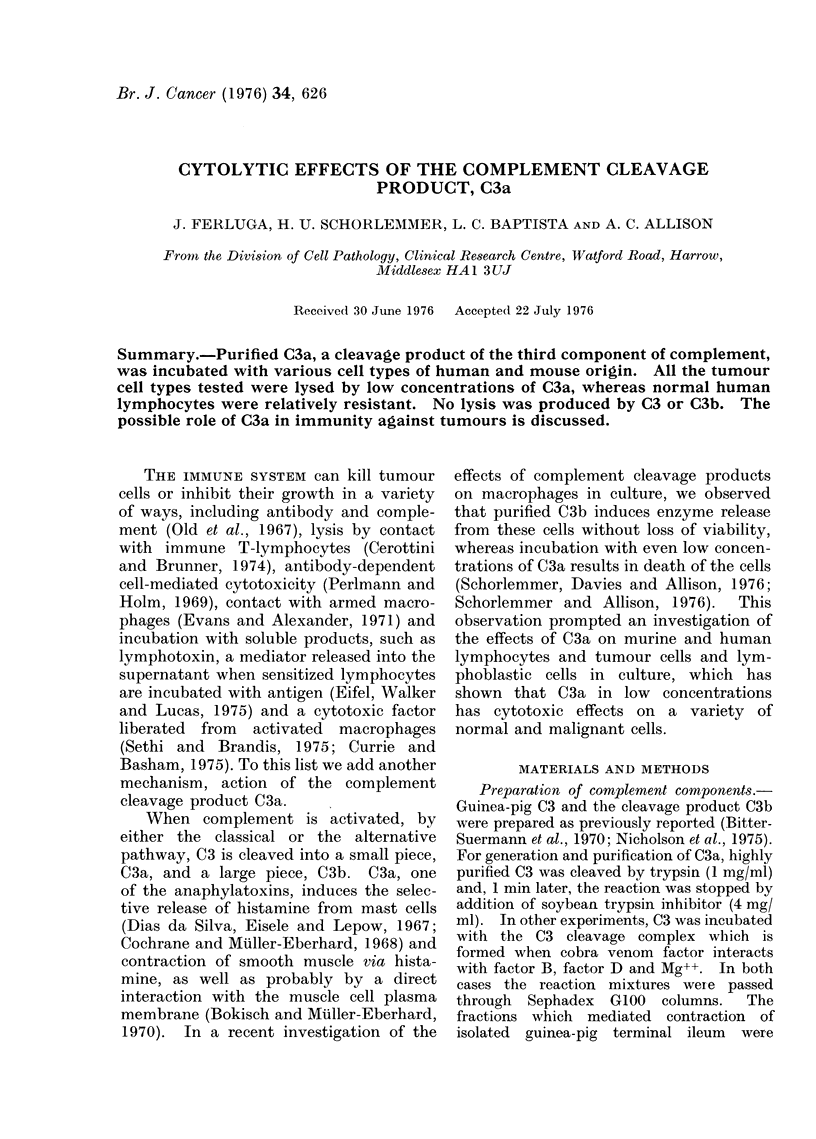
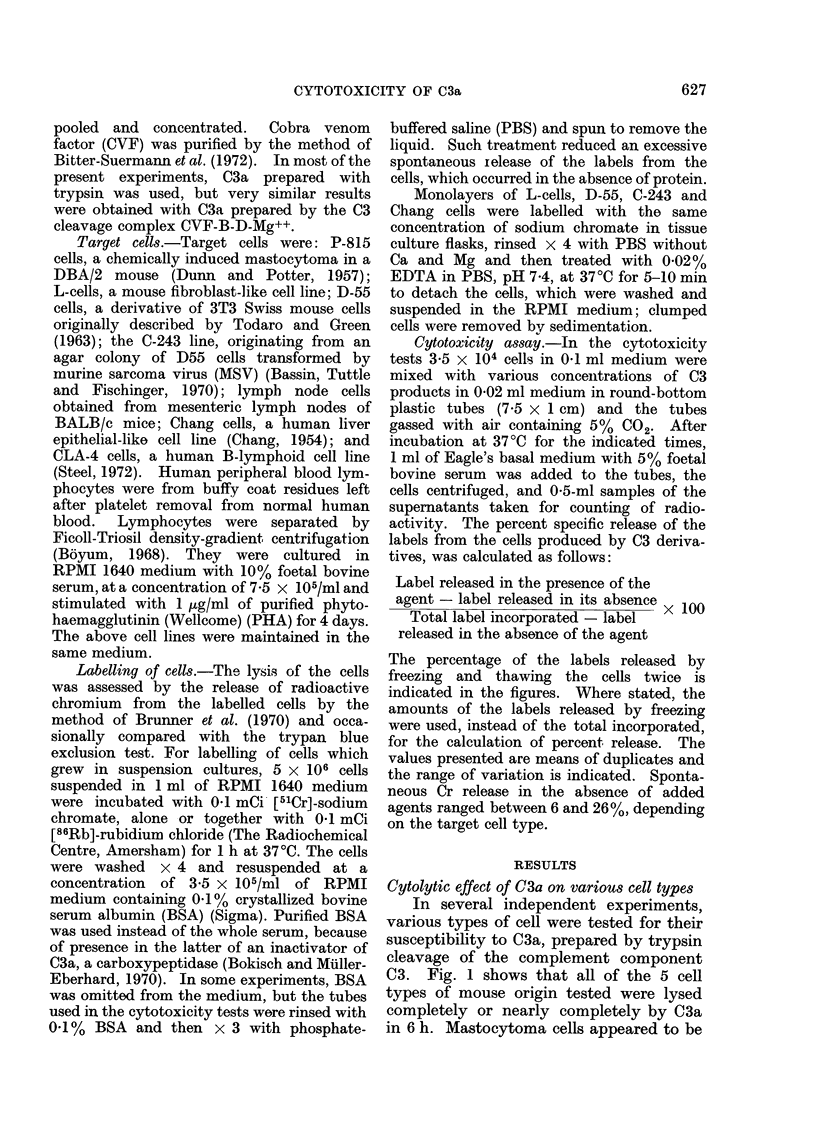
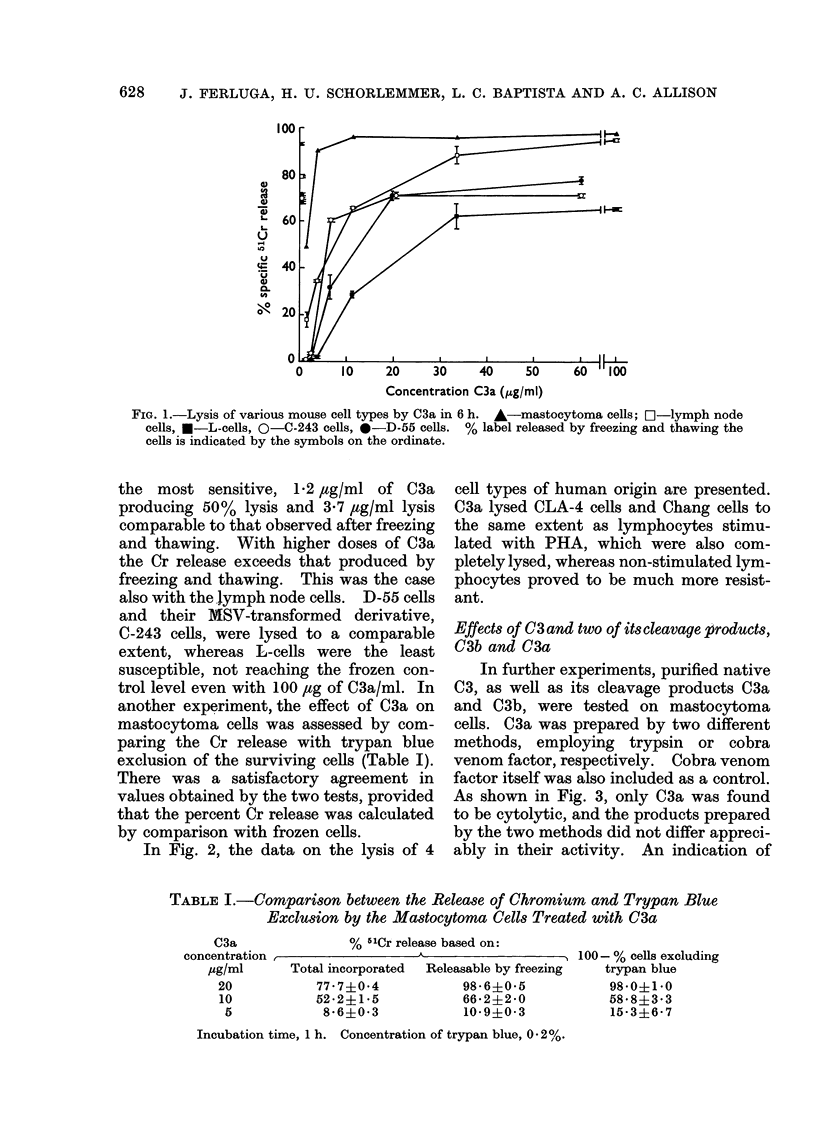
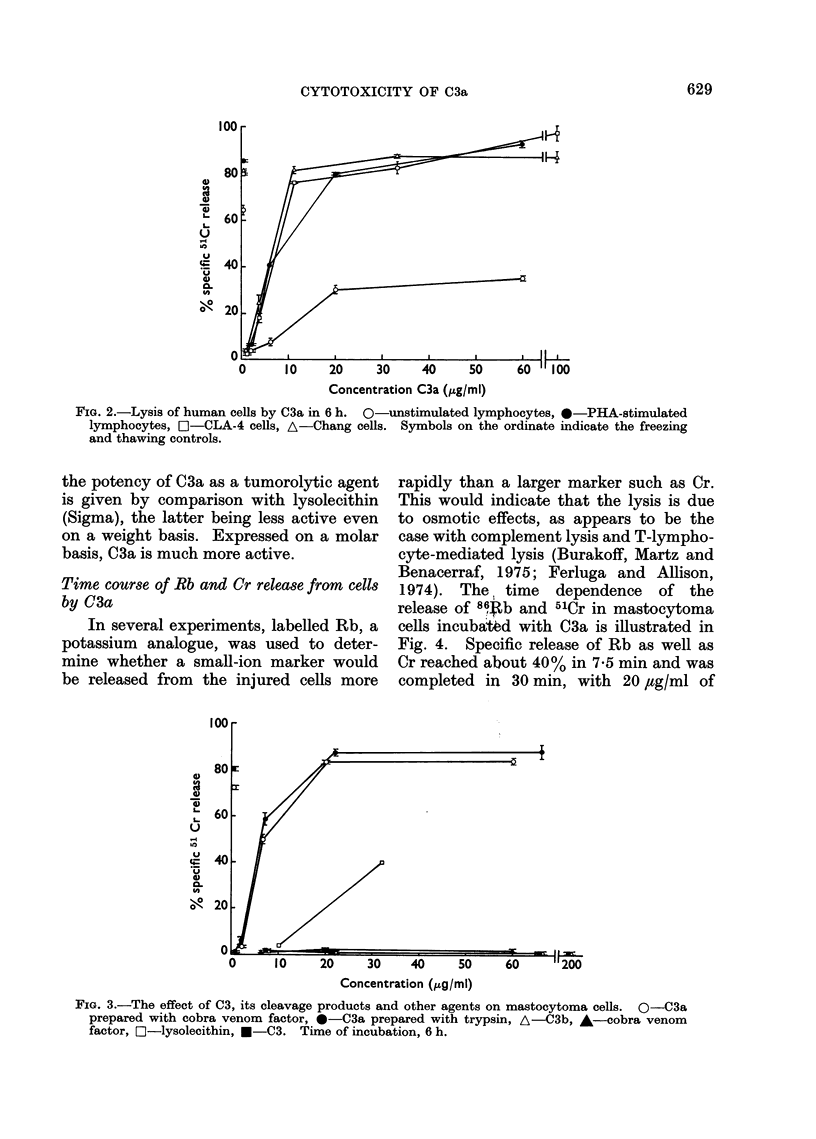
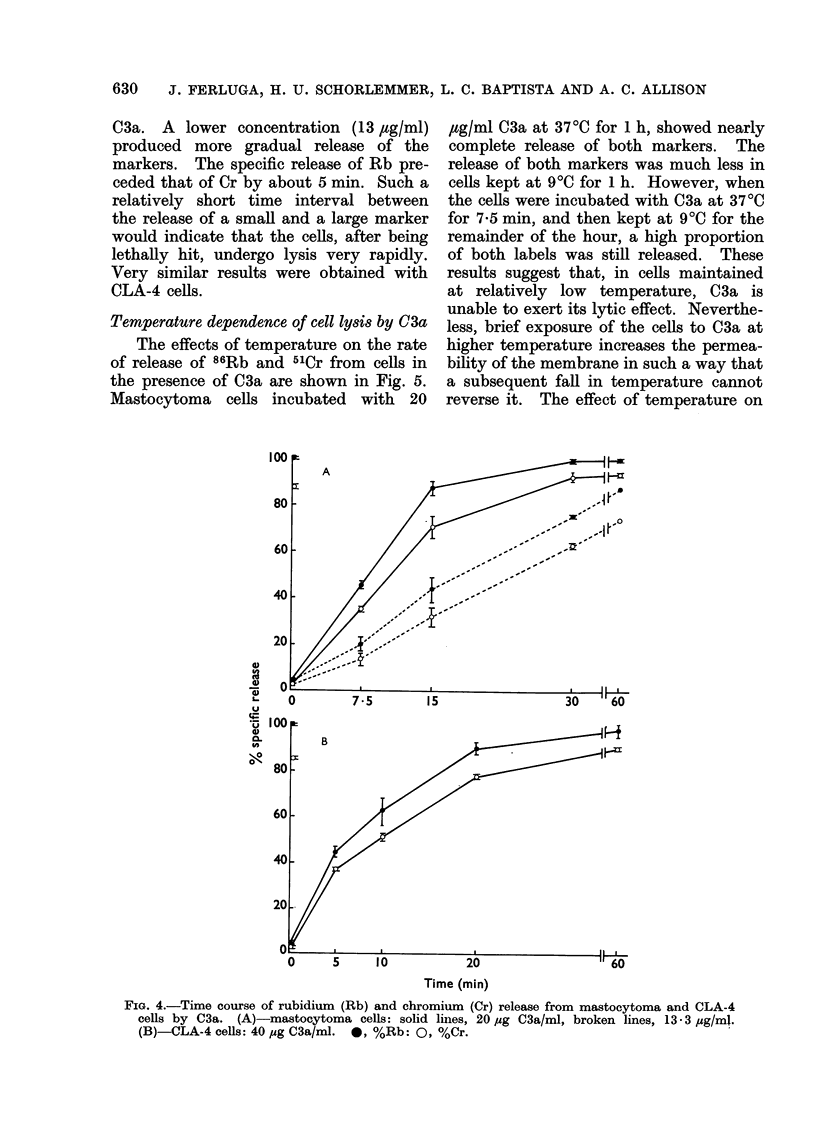
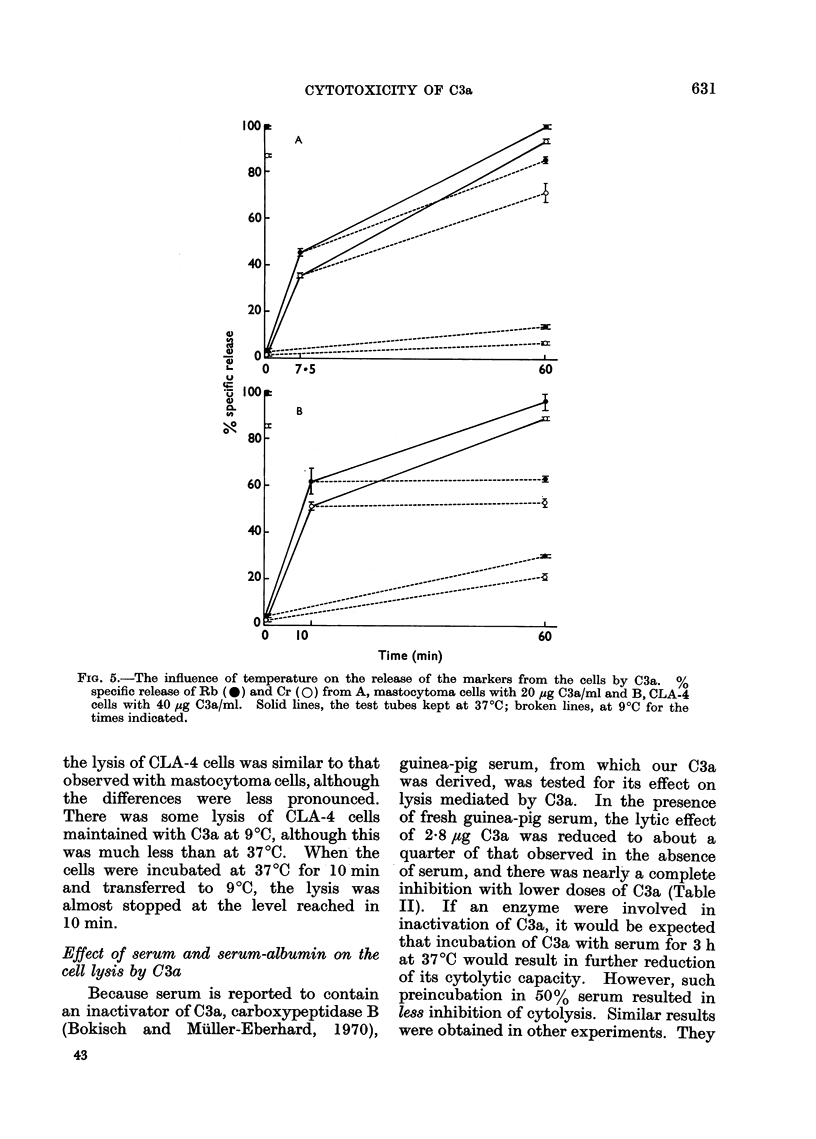
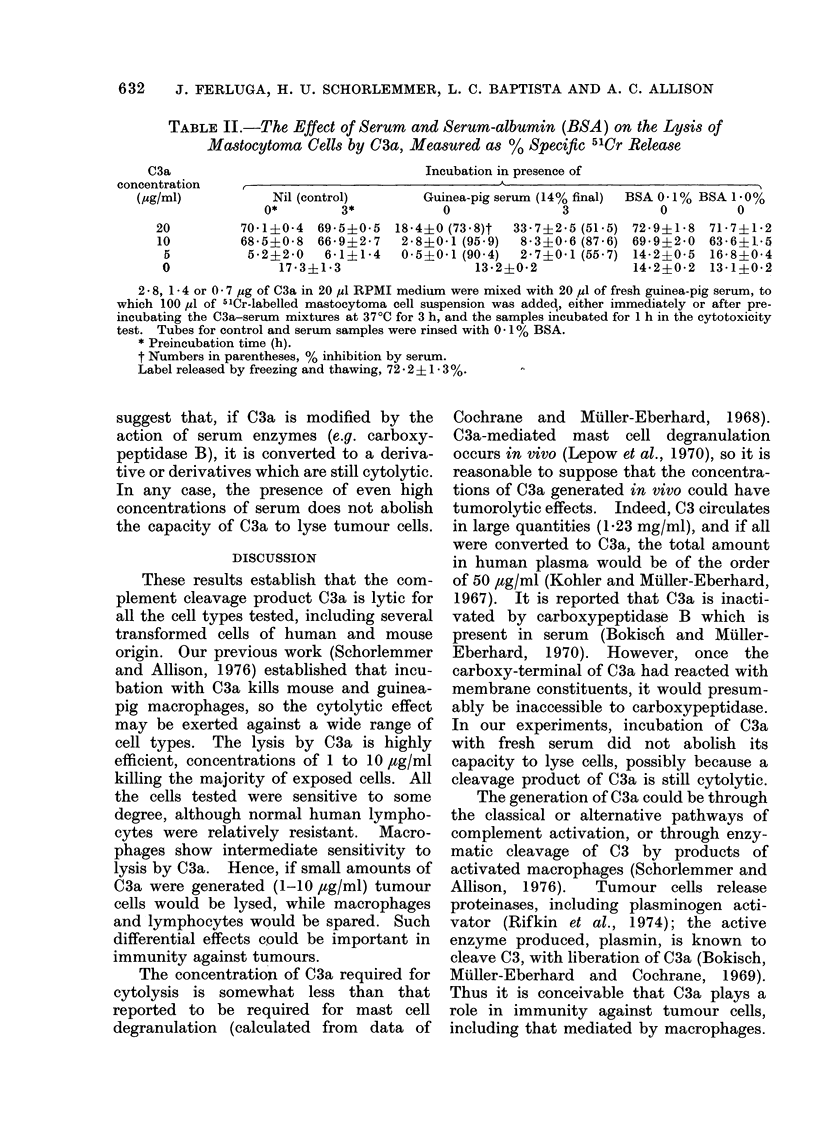
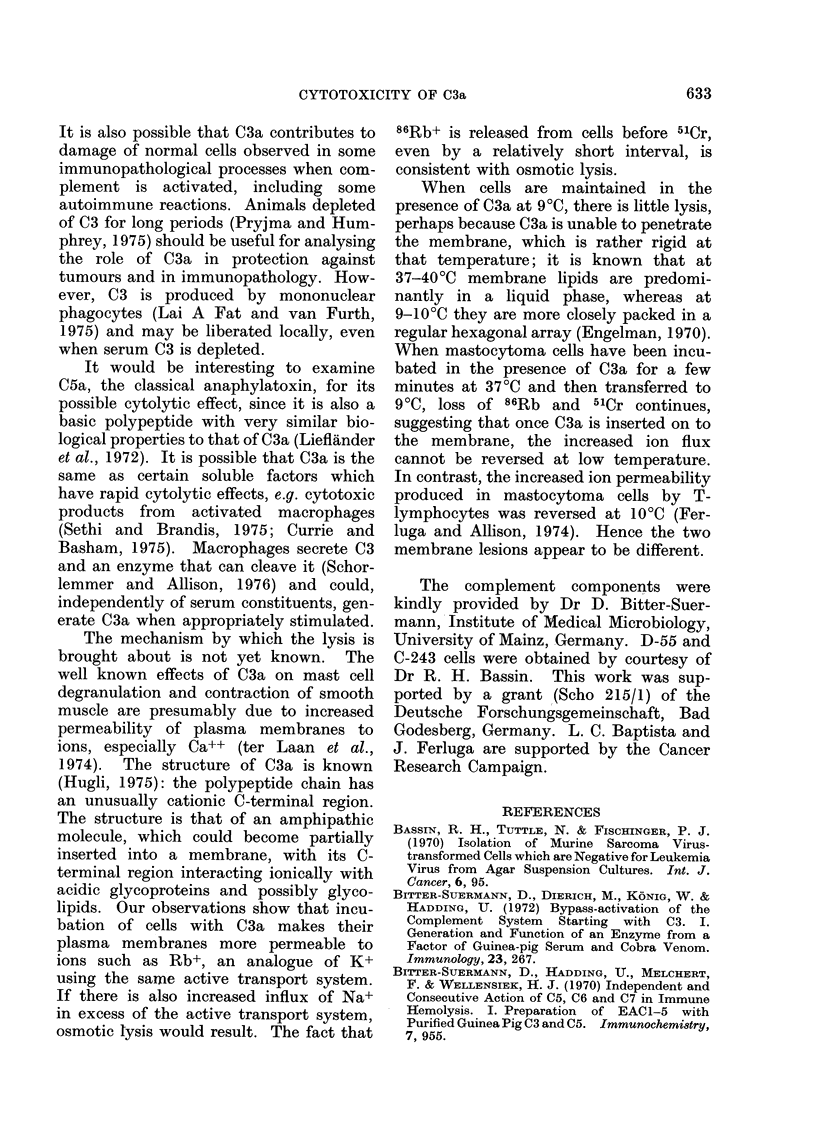
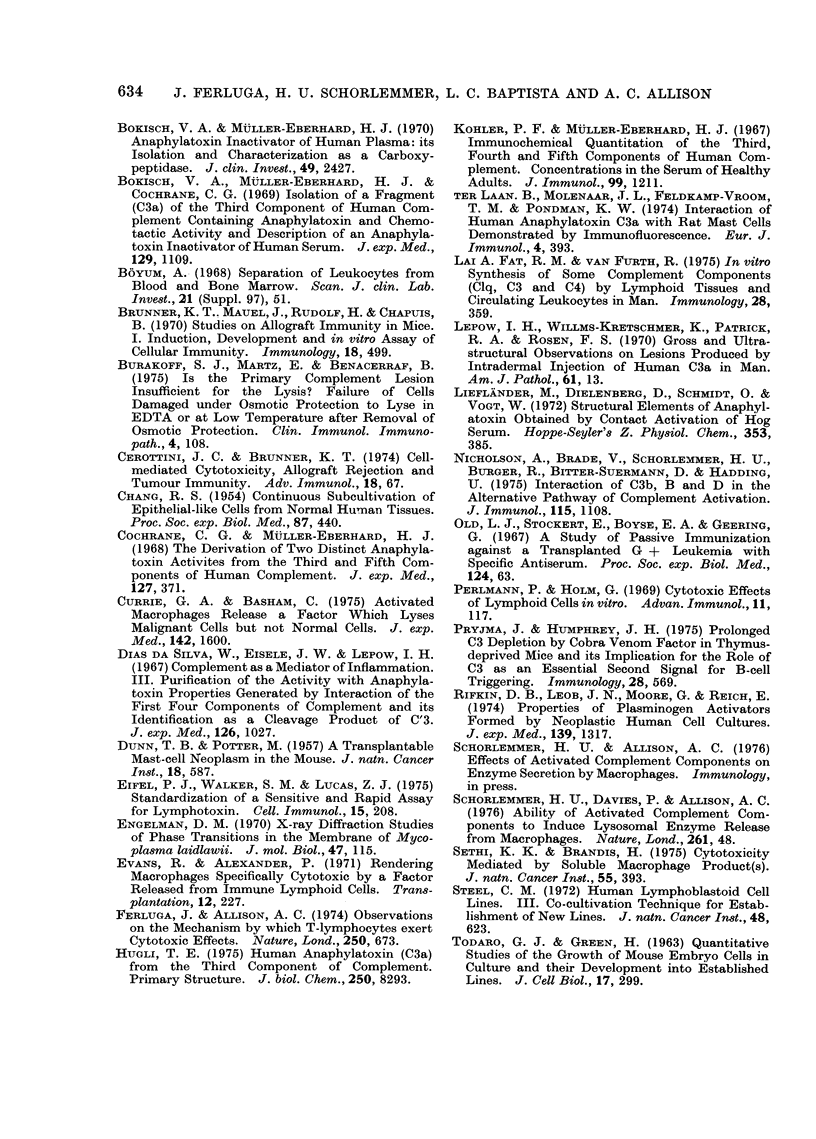
Selected References
These references are in PubMed. This may not be the complete list of references from this article.
- Bassin R. H., Tuttle N., Fischinger P. J. Isolation of murine sarcoma virus-transformed mouse cells which are negative for leukemia virus from agar suspension cultures. Int J Cancer. 1970 Jul 15;6(1):95–107. doi: 10.1002/ijc.2910060114. [DOI] [PubMed] [Google Scholar]
- Bitter-Suermann D., Dierich M., König W., Hadding U. Bypass-activation of the complement system starting with C3. I. Generation and function of an enzyme from a factor of guinea-pig serum and cobra venom. Immunology. 1972 Sep;23(3):267–281. [PMC free article] [PubMed] [Google Scholar]
- Bitter-Suermann D., Hadding U., Melchert F., Wellensiek H. J. Independent and consecutive action of the complement components C5, C6 and C7 in immune hemolysis. I. Preparation of EAC1-5 with purified guinea pig C3 and C5. Immunochemistry. 1970 Dec;7(12):955–965. doi: 10.1016/0019-2791(70)90002-9. [DOI] [PubMed] [Google Scholar]
- Bokisch V. A., Müller-Eberhard H. J. Anaphylatoxin inactivator of human plasma: its isolation and characterization as a carboxypeptidase. J Clin Invest. 1970 Dec;49(12):2427–2436. doi: 10.1172/JCI106462. [DOI] [PMC free article] [PubMed] [Google Scholar]
- Bokisch V. A., Müller-Eberhard H. J., Cochrane C. G. Isolation of a fragment (C3a) of the third component of human complement containing anaphylatoxin and chemotactic activity and description of an anaphylatoxin inactivator of human serum. J Exp Med. 1969 May 1;129(5):1109–1130. doi: 10.1084/jem.129.5.1109. [DOI] [PMC free article] [PubMed] [Google Scholar]
- Burakoff S. J., Martz E., Benacerraf B. Is the primary complement lesion insufficient for lysis? Failure of cells damaged under osmotic protection to lyse in EDTA or at low temperature after removal of osmotic protection. Clin Immunol Immunopathol. 1975 May;4(1):108–126. doi: 10.1016/0090-1229(75)90045-8. [DOI] [PubMed] [Google Scholar]
- CHANG R. S. M. Continuous subcultivation of epithelial-like cells from normal human tissues. Proc Soc Exp Biol Med. 1954 Nov;87(2):440–443. doi: 10.3181/00379727-87-21406. [DOI] [PubMed] [Google Scholar]
- Cerottini J. C., Brunner K. T. Cell-mediated cytotoxicity, allograft rejection, and tumor immunity. Adv Immunol. 1974;18:67–132. doi: 10.1016/s0065-2776(08)60308-9. [DOI] [PubMed] [Google Scholar]
- Cochrane C. G., Müller-Eberhard H. J. The derivation of two distinct anaphylatoxin activities from the third and fifth components of human complement. J Exp Med. 1968 Feb 1;127(2):371–386. doi: 10.1084/jem.127.2.371. [DOI] [PMC free article] [PubMed] [Google Scholar]
- Currie G. A., Basham C. Activated macrophages release a factor which lyses malignant cells but not normal cells. J Exp Med. 1975 Dec 1;142(6):1600–1605. doi: 10.1084/jem.142.6.1600. [DOI] [PMC free article] [PubMed] [Google Scholar]
- DUNN T. B., POTTER M. A transplantable mast-cell neoplasm in the mouse. J Natl Cancer Inst. 1957 Apr;18(4):587–601. [PubMed] [Google Scholar]
- Eifel P. J., Walker S. M., Lucas Z. J. Standardization of a sensitive and rapid assay for lymphotoxin. Cell Immunol. 1975 Jan;15(1):208–221. doi: 10.1016/0008-8749(75)90176-8. [DOI] [PubMed] [Google Scholar]
- Engelman D. M. X-ray diffraction studies of phase transitions in the membrane of Mycoplasma laidlawii. J Mol Biol. 1970 Jan 14;47(1):115–117. doi: 10.1016/0022-2836(70)90407-9. [DOI] [PubMed] [Google Scholar]
- Evans R., Alexander P. Rendering macrophages specifically cytotoxic by a factor released from immune lymphoid cells. Transplantation. 1971 Sep;12(3):227–229. doi: 10.1097/00007890-197109000-00015. [DOI] [PubMed] [Google Scholar]
- Ferluga J., Allison A. C. Observations on the mechanism by which T-lymphocytes exert cytotoxic effects. Nature. 1974 Aug 23;250(5468):673–675. doi: 10.1038/250673a0. [DOI] [PubMed] [Google Scholar]
- Hugli T. E. Human anaphylatoxin (C3a) from the third component of complement. Primary structure. J Biol Chem. 1975 Nov 10;250(21):8293–8301. [PubMed] [Google Scholar]
- Lai A Fat R. F., van Furth R. In vitro synthesis of some complement components (C1q, C3 and C4) by lymphoid tissues and circulating leucocytes in man. Immunology. 1975 Feb;28(2):359–368. [PMC free article] [PubMed] [Google Scholar]
- Lepow I. H., Willms-Kretschmer K., Patrick R. A., Rosen F. S. Gross and ultrastructural observations on lesions produced by intradermal injection of human C3a in man. Am J Pathol. 1970 Oct;61(1):13–23. [PMC free article] [PubMed] [Google Scholar]
- Liefländer M., Dielenberg D., Schmidt G., Vogi W. Structural elements of anaphylatoxin obtained by contact activation of hog serum. Hoppe Seylers Z Physiol Chem. 1972 Mar;353(3):385–392. doi: 10.1515/bchm2.1972.353.1.385. [DOI] [PubMed] [Google Scholar]
- Nicholson A., Brade V., Schorlemmer H. U., Burger R., Bitter-Suermann D., Hadding U. Interaction of C3b, B, and D in the alternative pathway of complement activation. J Immunol. 1975 Oct;115(4):1108–1113. [PubMed] [Google Scholar]
- Old L. J., Stockert E., Boyse E. A., Geering G. A study of passive immunization against a transplanted G+ leukemia with specific antiserum. Proc Soc Exp Biol Med. 1967 Jan;124(1):63–68. doi: 10.3181/00379727-124-31667. [DOI] [PubMed] [Google Scholar]
- Perlmann P., Holm G. Cytotoxic effects of lymphoid cells in vitro. Adv Immunol. 1969;11:117–193. doi: 10.1016/s0065-2776(08)60479-4. [DOI] [PubMed] [Google Scholar]
- Pryjma J., Humphrey J. H. Prolonged C3 depletion by cobra venom factor in thymus-deprived mice and its implication for the role of C3 as an essential second signal for B-cell triggering. Immunology. 1975 Mar;28(3):569–576. [PMC free article] [PubMed] [Google Scholar]
- Rifkin D. B., Loeb J. N., Moore G., Reich E. Properties of plasminogen activators formed by neoplastic human cell cultures. J Exp Med. 1974 May 1;139(5):1317–1328. doi: 10.1084/jem.139.5.1317. [DOI] [PMC free article] [PubMed] [Google Scholar]
- Schorlemmer H. U., Davies P., Allison A. C. Ability of activated complement components to induce lysosomal enzyme release from macrophages. Nature. 1976 May 6;261(5555):48–49. doi: 10.1038/261048a0. [DOI] [PubMed] [Google Scholar]
- Sethi K. K., Brandis H. Cytotoxicity mediated by soluble macrophage product(s). J Natl Cancer Inst. 1975 Aug;55(2):393–395. [PubMed] [Google Scholar]
- Steel C. M. Human lymphoblastoid cell lines. 3. Co-cultivation technique for establishment of new lines. J Natl Cancer Inst. 1972 Mar;48(3):623–628. [PubMed] [Google Scholar]
- TODARO G. J., GREEN H. Quantitative studies of the growth of mouse embryo cells in culture and their development into established lines. J Cell Biol. 1963 May;17:299–313. doi: 10.1083/jcb.17.2.299. [DOI] [PMC free article] [PubMed] [Google Scholar]
- da Silva W. D., Eisele J. W., Lepow I. H. Complement as a mediator of inflammation. 3. Purification of the activity with anaphylatoxin properties generated by interaction of the first four components of complement and its identification as a cleavage product of C'3. J Exp Med. 1967 Dec 1;126(6):1027–1048. doi: 10.1084/jem.126.6.1027. [DOI] [PMC free article] [PubMed] [Google Scholar]
- ter Laan B., Molenaar J. L., Feltkamp-Vroom T. M., Pondman K. W. Interaction of human anaphylatoxin C3a with rat mast cells demonstrated by immunofluorescence. Eur J Immunol. 1974 May;4(5):393–395. doi: 10.1002/eji.1830040517. [DOI] [PubMed] [Google Scholar]


